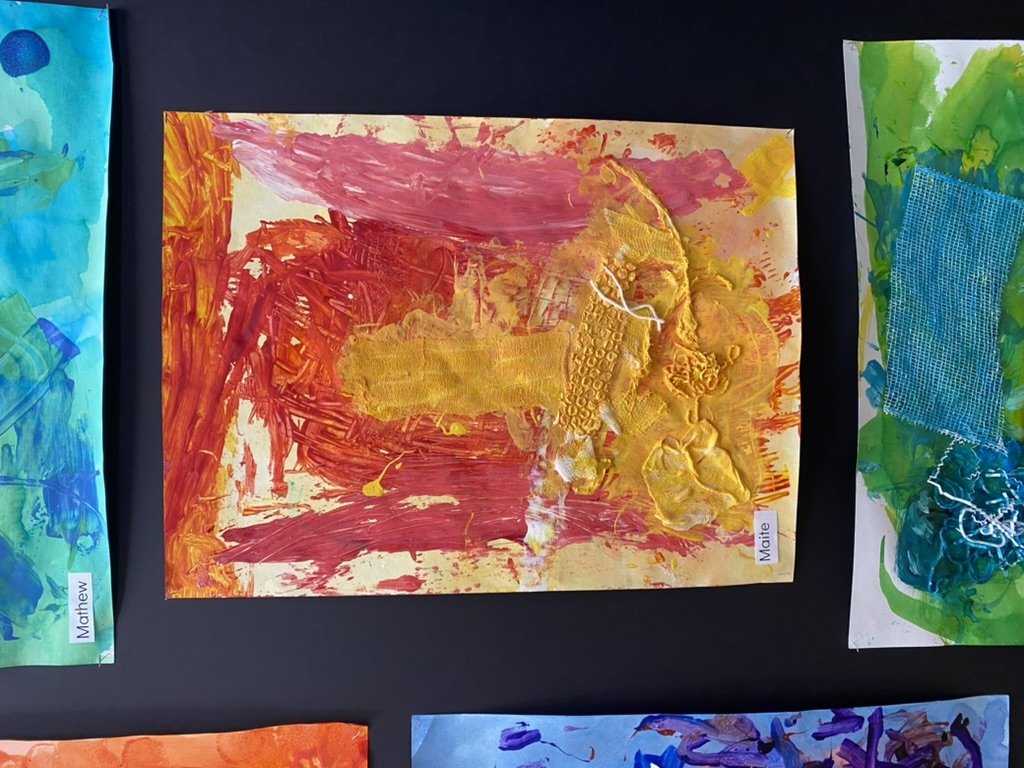
Art in the IntendED Classroom.
Young children are natural artists. Give them a crayon, marker, pencil, or even a stick, and they will draw. They
take creativity very seriously and may become engrossed in short order. The same is true when children create with Playdough or clay. The sensory aspect alone can make Playdough the most positive activity choice to start the day.
Opening the eyes and minds of children to appreciate the beautiful variety of artists, musicians and dancers from across the globe is a central theme in this area of the IntendED program. It is important to create a visual affirmation of the respect all people deserve by displaying art from diverse artists. Paintings that depict a multiracial world help children see themselves in the art, and helps support a deeper, global view of the world.
Elements of Art in the IntendED Classroom include:
Visual Arts: A Process-Centered Approach
Music
Dance and Movement
Expand any of the categories below to learn more about the IntendED approach to teaching Art:
-
The teacher’s role in a visual arts program is to provide materials, demonstrate techniques, and then let children blaze a trail. Encouragement from a caregiver or teacher fuels children’s creative experiments. At the core of visual expression is the process. If a project has a model with a specific outcome, it is not really an art project. It may qualify as a fine-motor opportunity or a project focused on following a series of auditory directions, but it is not art.
To be considered a true art experience, the process of creation must be at a project’s core. Giving children a pattern to follow as they create a product does not measure up to this standard. Instead, the project must allow the freedom of creation and expression to be in the hands and mind of the student.
A teacher may demonstrate a technique, like pinching clay to make a bowl to help prepare children for an art project; the children can then apply the technique to their own creations. Tracing a hand to make a turkey results in an outcome that is predetermined, while process-centered art will always produce a wide variety of artistic creations.
-
All children gravitate to music. Music is especially significant for children who are language learners and for those with some disabilities. Music draws children together and is important in creating a warm community where everyone can feel successful.
Singing nursery rhymes and simple tunes sets the stage for listening to and appreciating a broader range of music. Listening to calm, classical music can provide a sense of ease and can change the pace of the day.
Children like to make music as well. If there are children’s instruments available — such as shakers, drums, or wooden objects that can be used for percussion — then a parade or a band is not far behind.
-
Children love to move, and moving to music is even more engaging! The teacher can introduce children to big moves, small moves, tippy-toe moves, and heavy moves. This provides children with the vocabulary to express verbally the kinds of moves that might go best with a particular piece of music. Children can learn to match the music with their movement as they listen to a variety of musical pieces from chamber music to country western.


